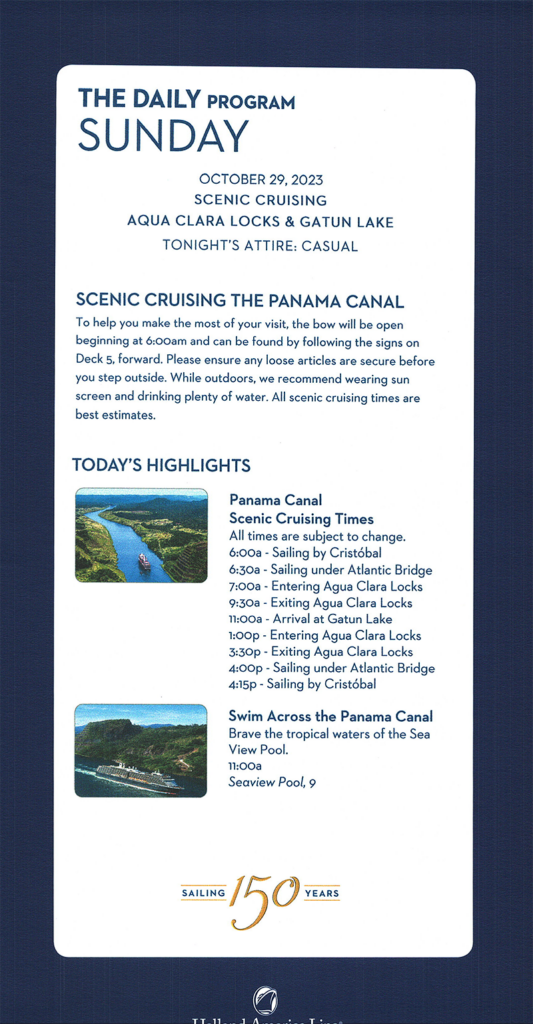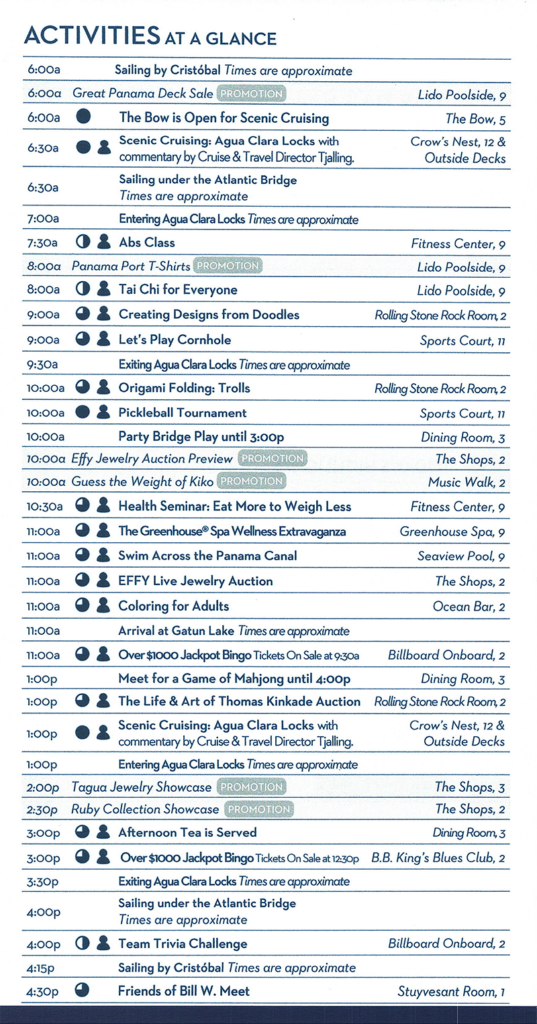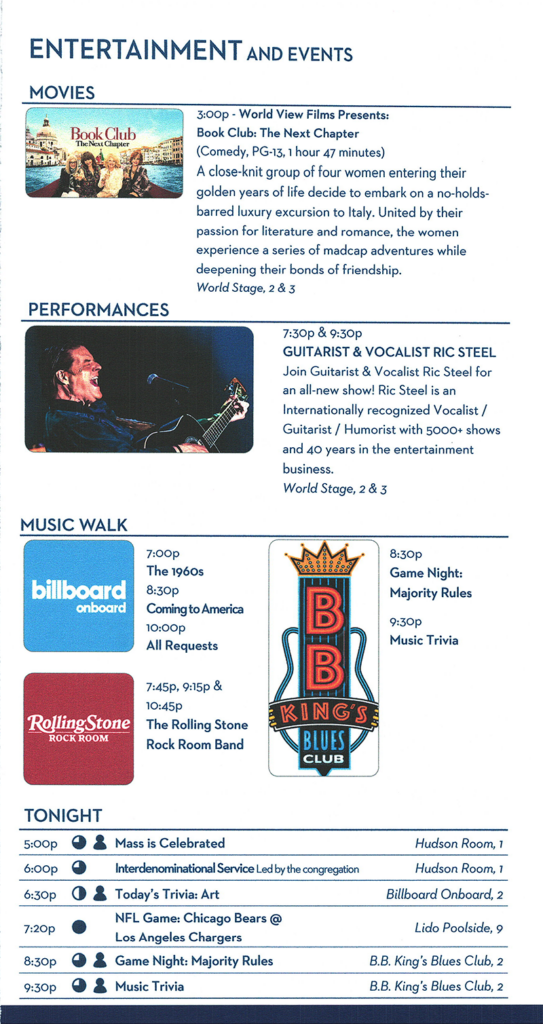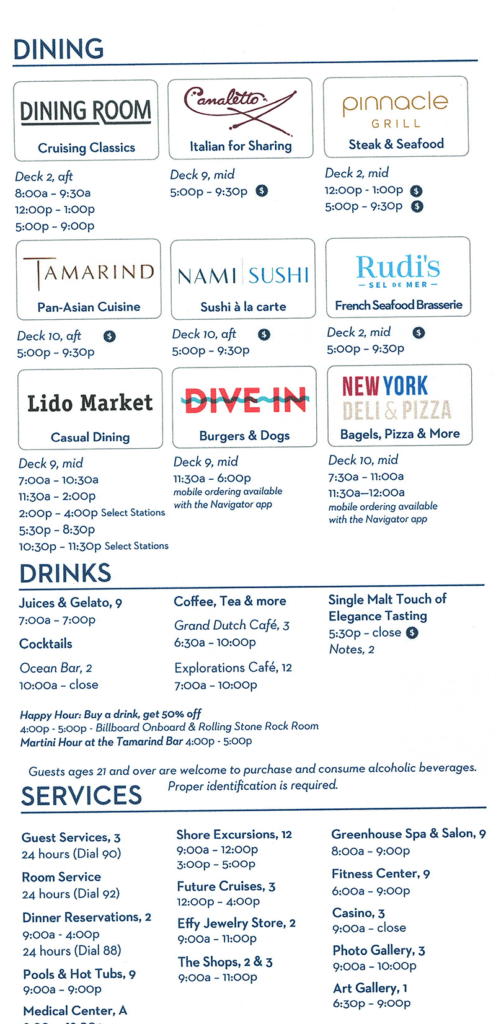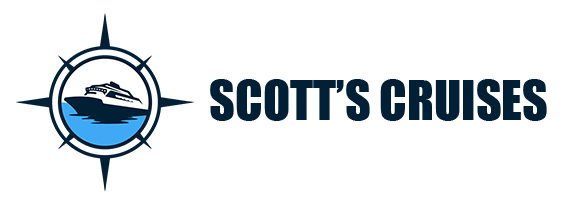The most anticipated day of this 21-day cruise on Holland America’s Rotterdam has arrived – the day we do a partial transit of the Panama Canal. The last time I went through the canal, I was on Holland America’s Zuiderdam which was small enough to pass thru the century-old original canal locks. You can read about that adventure and see photos from that passage, here.
Like that trip, I booked an excursion that would allow me to transfer to a ferry which would then take me through to the Pacific making a full canal passage. Unfortunately, a few nights ago we were delivered a letter saying that all excursions in Panama are being canceled due to protests by environmentalists over a copper mine contract. The protests have resulted in schools being closed and cruise ships being told not to let passengers ashore. To say I was disappointed would be an understatement.
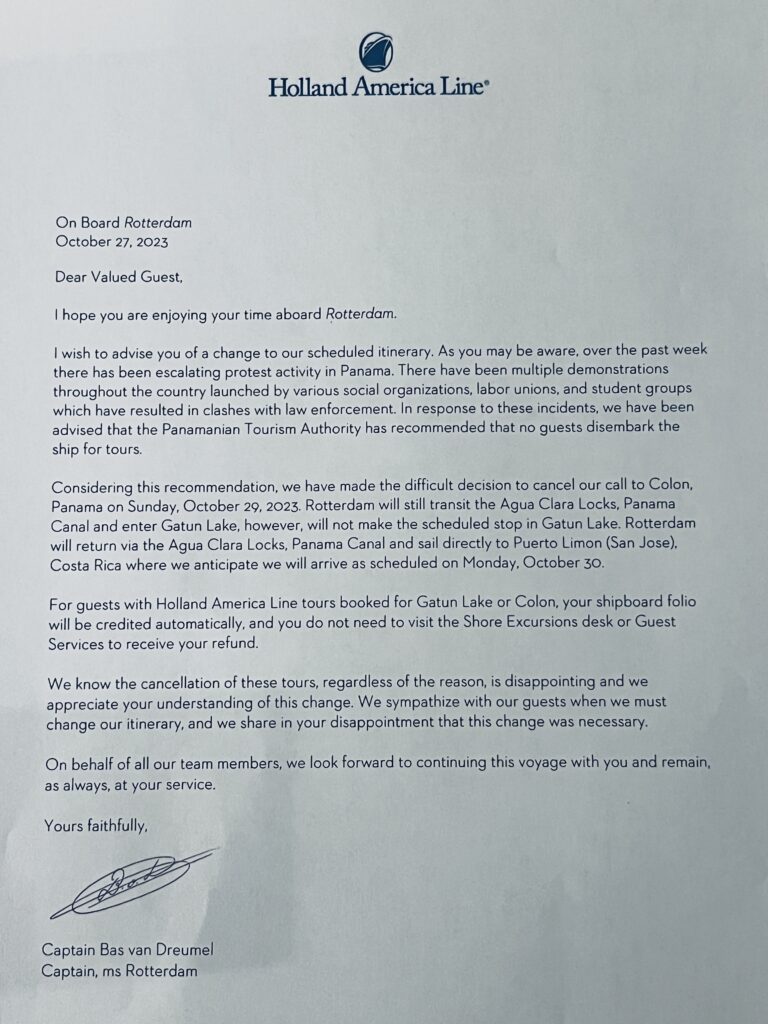
However, the ship would still go through the canal, cruise around Gatun Lake, and exit through the canal back to the Atlantic where we came from. Before I get into more, a brief history of the canal:
Way Back When: Before the canal, if you wanted to get from the Atlantic to the Pacific (or vice versa), you had to take the long and treacherous journey around South America. Not fun. People had been dreaming of a shortcut for hundreds of years.
The French Give it a Go: In 1881, the French, led by Ferdinand de Lesseps (the guy who built the Suez Canal in Egypt), started digging. But, they were totally unprepared for the Panama rainforest. Malaria, yellow fever, and all sorts of nasty diseases wiped out thousands of workers. After losing a ton of money and lives, they had to throw in the towel. Remnants of the French’s attempts at creating a canal are still visible today and can be seen just before you enter the original locks coming from the Atlantic:
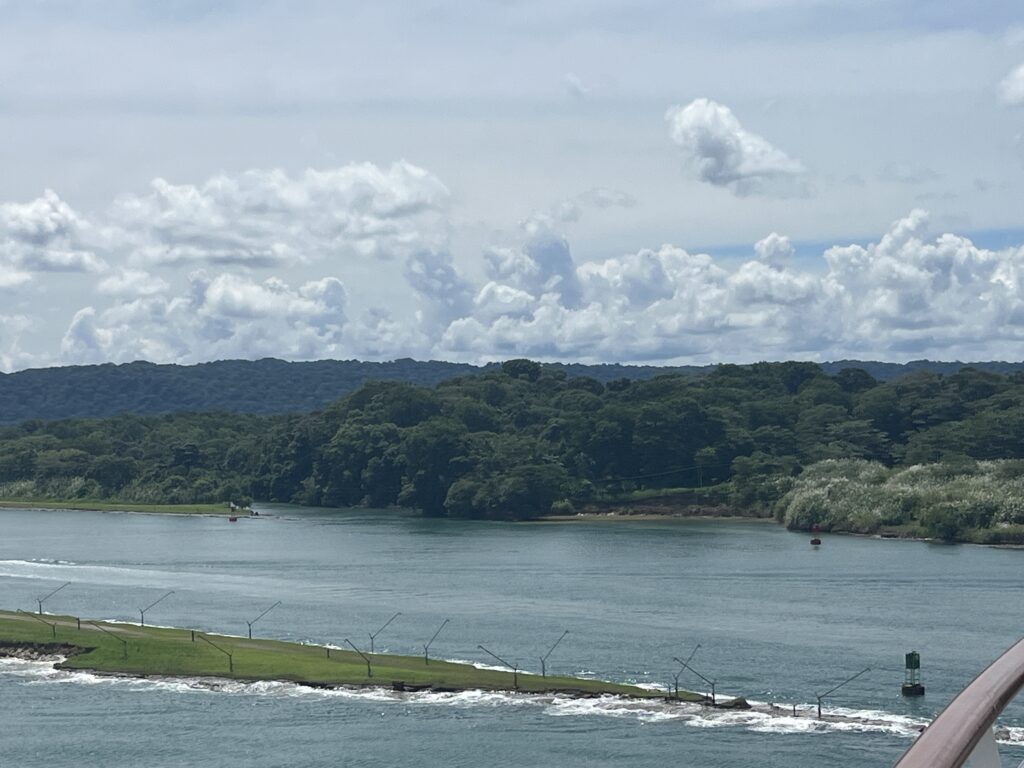
America Steps In: Fast forward to 1904. The U.S., under President Theodore Roosevelt, takes over the project. They bring in a guy named William Gorgas to sort out the health issues. He pretty much wipes out malaria and yellow fever in the area, making it safe to work.
The Big Dig: Now, the real work begins. They decided to build a lock and lake canal instead of a sea-level one. This means they create a massive lake (Gatun Lake) in the middle of the canal, and use a series of locks to lift ships up to the lake and then back down again. It’s like a giant water elevator for ships!
Completion and Handover: After 10 years of intense labor, and a lot of innovation, the canal is finally completed in 1914. It’s a huge deal and totally changes global trade. Fast forward again to 1999, and the U.S. hands control of the canal over to Panama.
Today: Nowadays, the Panama Canal is still a major player in global shipping, saving ships a ton of time and money. They even expanded it recently to fit even bigger ships with the opening of the neo-Panamax locks. The originals are referred to as Panamax locks. Ships are labeled as either Panamax or neo-Panamax based on which locks they can use. The Zuiderdam is a Panamax class ship, which means she can use either set of locks. The Rotterdam is a neo-Panamax class ship and can only fit through the neo-Panamax locks, which we are doing today.

The morning started off at around 5:30 am when the Rotterdam’s bow was made available for those wanting a front-row seat. Normally the bow is not accessible for passengers, but they set it up with tents for shade, some chairs, and had coffee, juice, and beverages available.
During the passage, the cruise director gave commentary about the history of the Panama Canal and some notable facts including that there is a $35,000 charge just to make a reservation to use the canal. Ships then pay additional fees to go through the canal. He did not have the exact cost for today’s adventure but said the last time he went through the canal on the smaller Eurodam, the cost was $440,000.
The first thing you see as you enter the Panama Canal area from the Atlantic side is the massive Atlantic Bridge which locals believe was a waste of the $300+ million it cost to build since it leads to an unpopulated area of the country. Once ships pass under the bridge, you go and are directed either to the old locks, or the new ones.
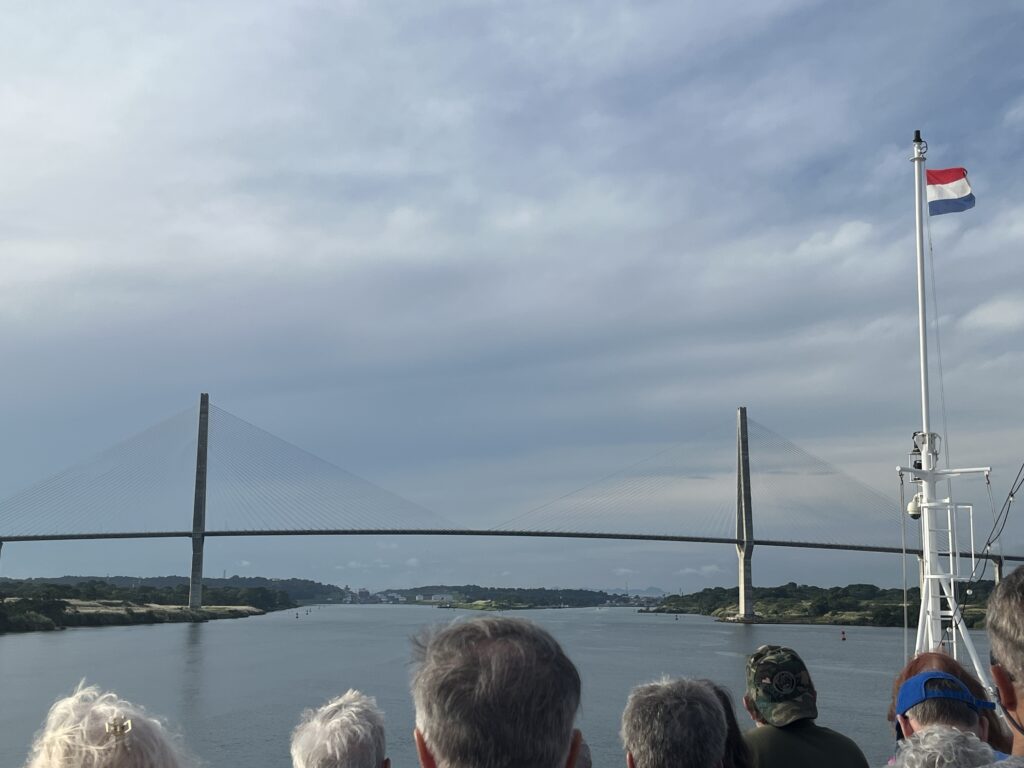
As I mentioned, we are going through the new locks since the Rotterdam is too large to fit through the original. Unlike the original locks, the new ones do not use locomotives, or “mules” are they are referred to, to hold ships in place once inside a lock. The new locks employ the use of tug boats – one at the front and one at the back – and the ship’s mooring lines to hold its position. The ship assists by using its engines and rudder to maneuver.
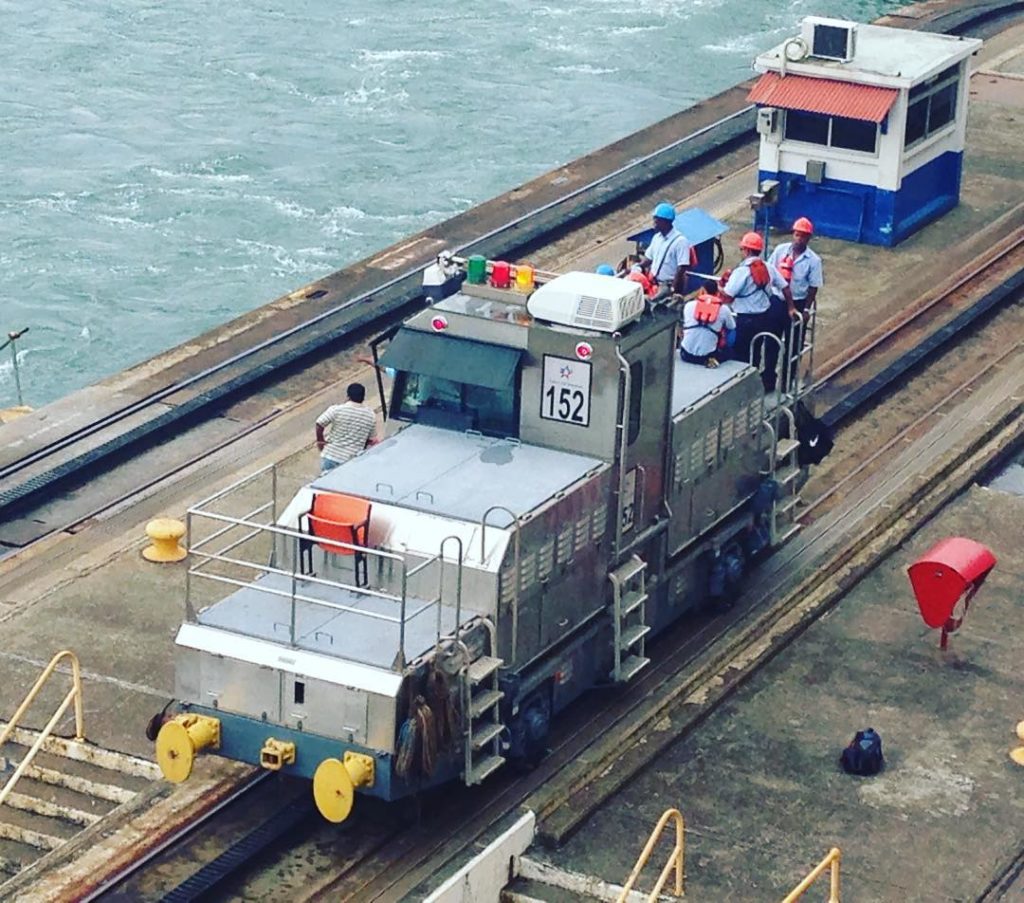
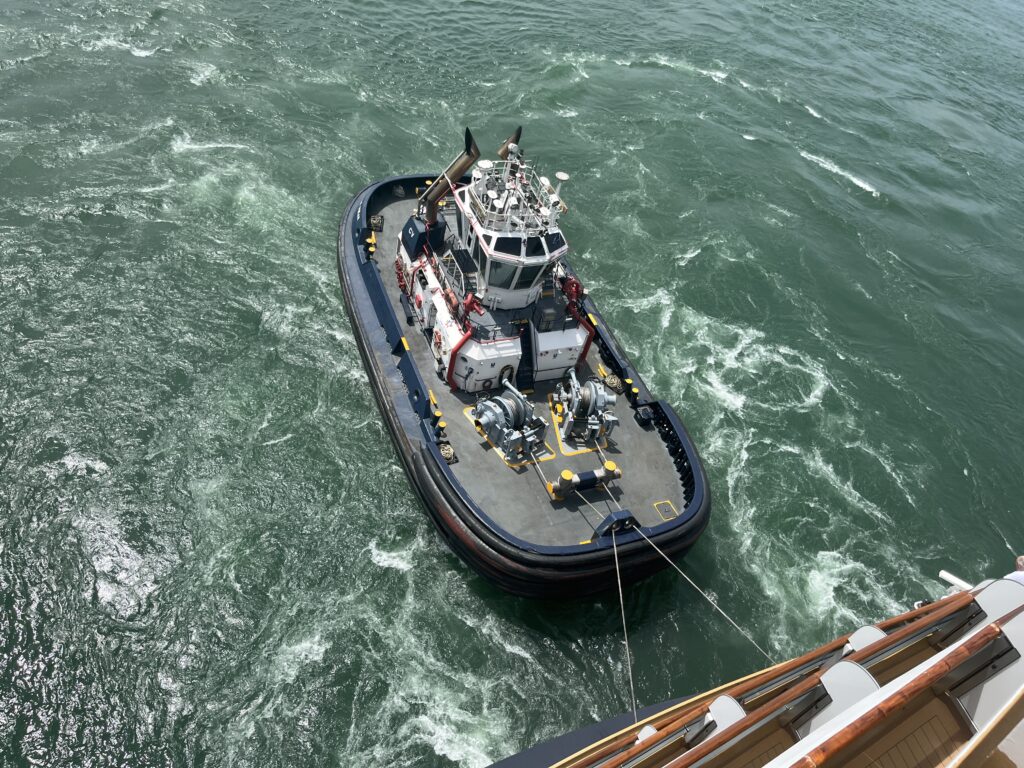
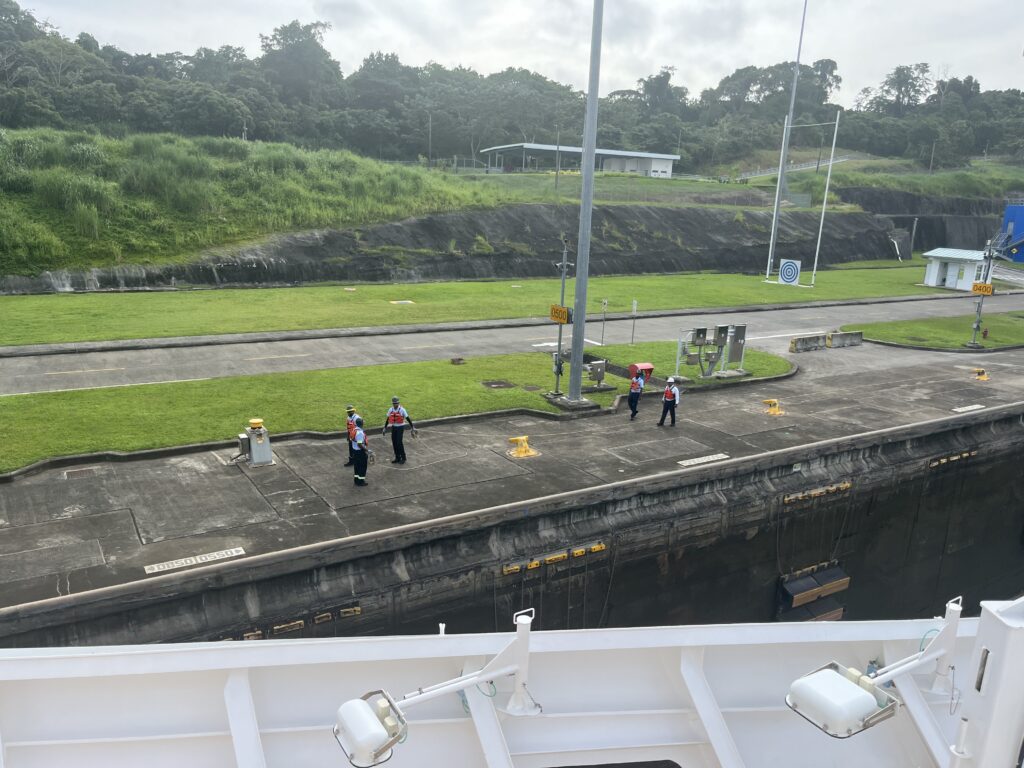
Once the tub boats were tied up to the ship we entered the first lock and were moored to the dock. Massive concrete and steel lock doors closed behind us as water, taken from Gatan Lake and nearby recycled water basins, slowly filled the chamber until we reached the water level of the second lock. The lock doors are much different in the new canal, as these are like pocket doors that slide in, while the old lock uses a pair of swing gates.
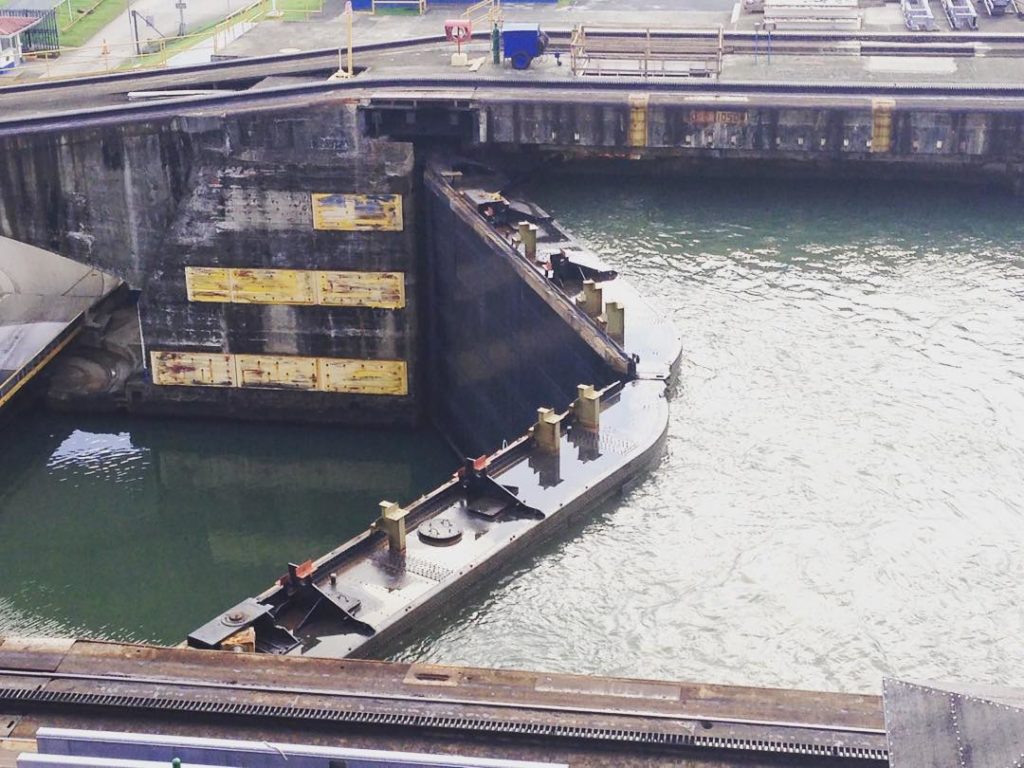
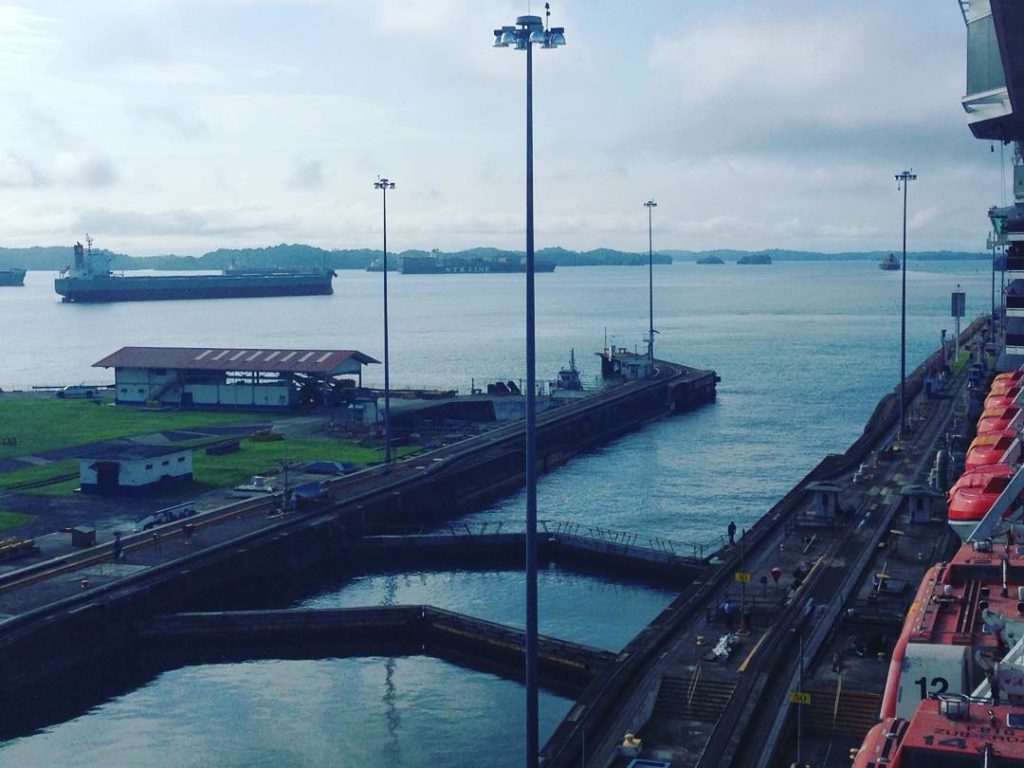
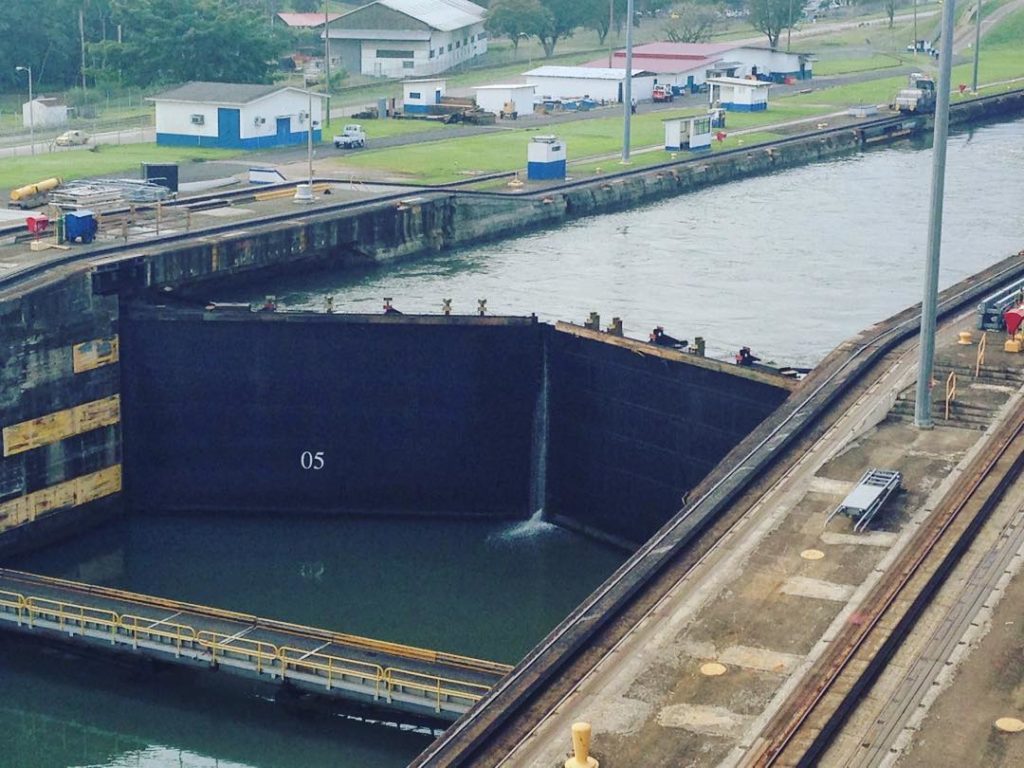

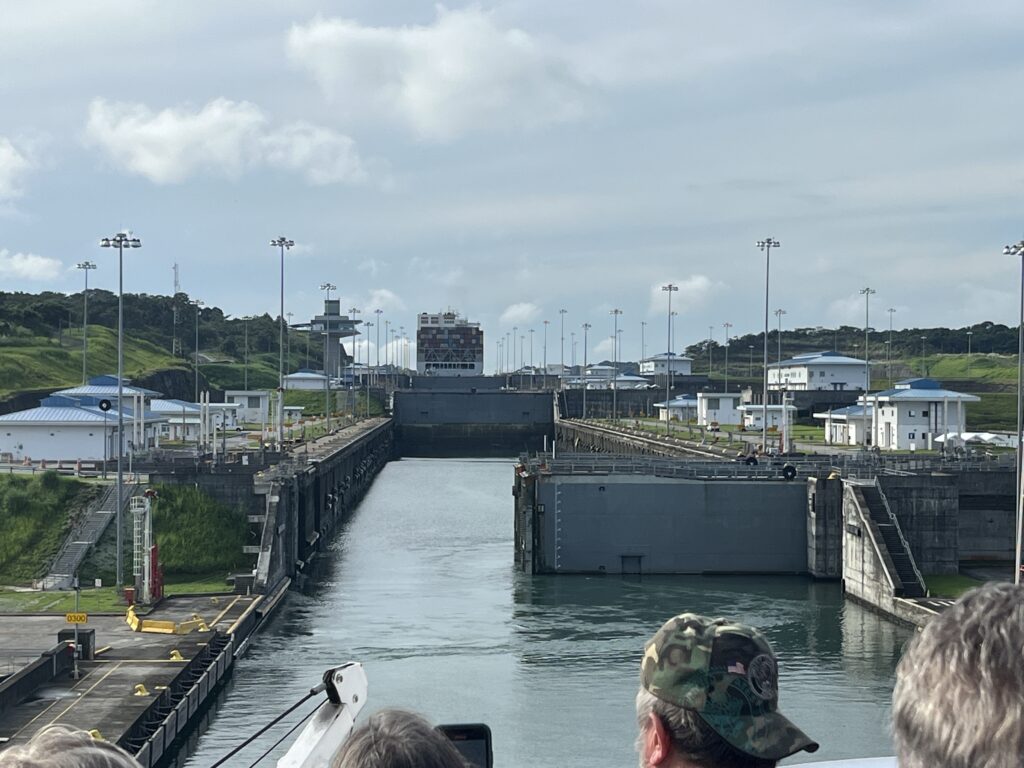
Once we reached the required level, the lock gate opened, mooring lines were pulled in and the ship maneuvered into the second chamber. The process repeated again until we went through the third chamber and the lock gate opened releasing us into Gatun Lake. It would be at that point where ships would traverse the lake and make their way through another set of locks on the Pacific side to cross over into the Pacific Ocean. The approximate time it takes a ship to make a full passage is about 10 hours, barring no delays.
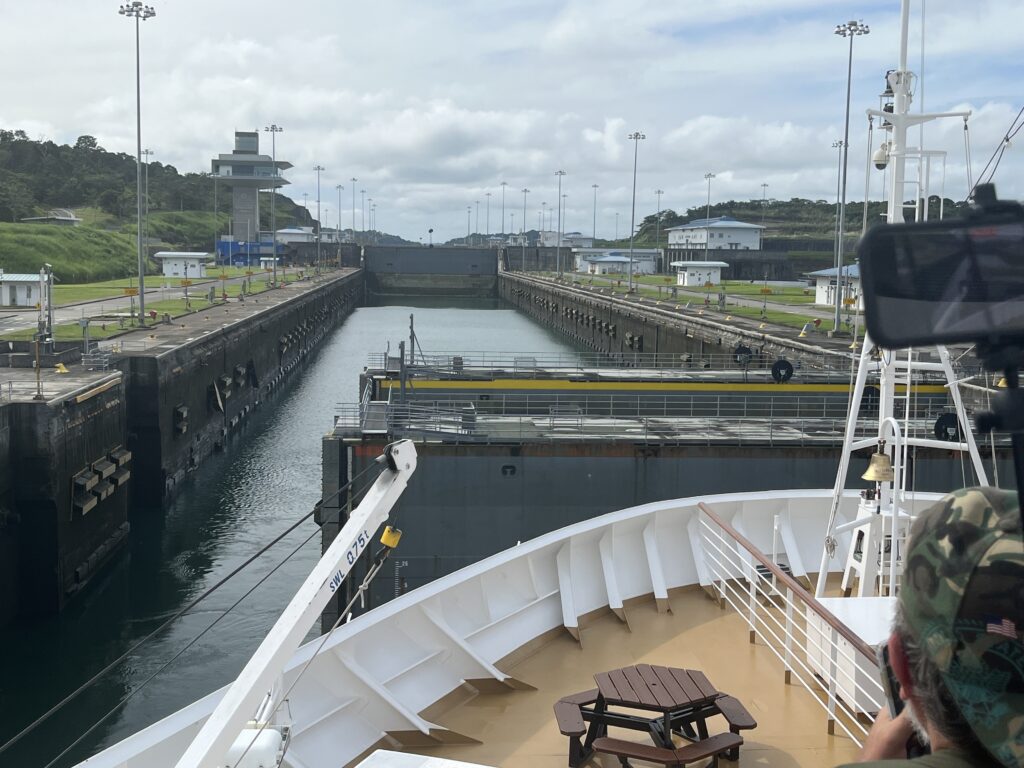
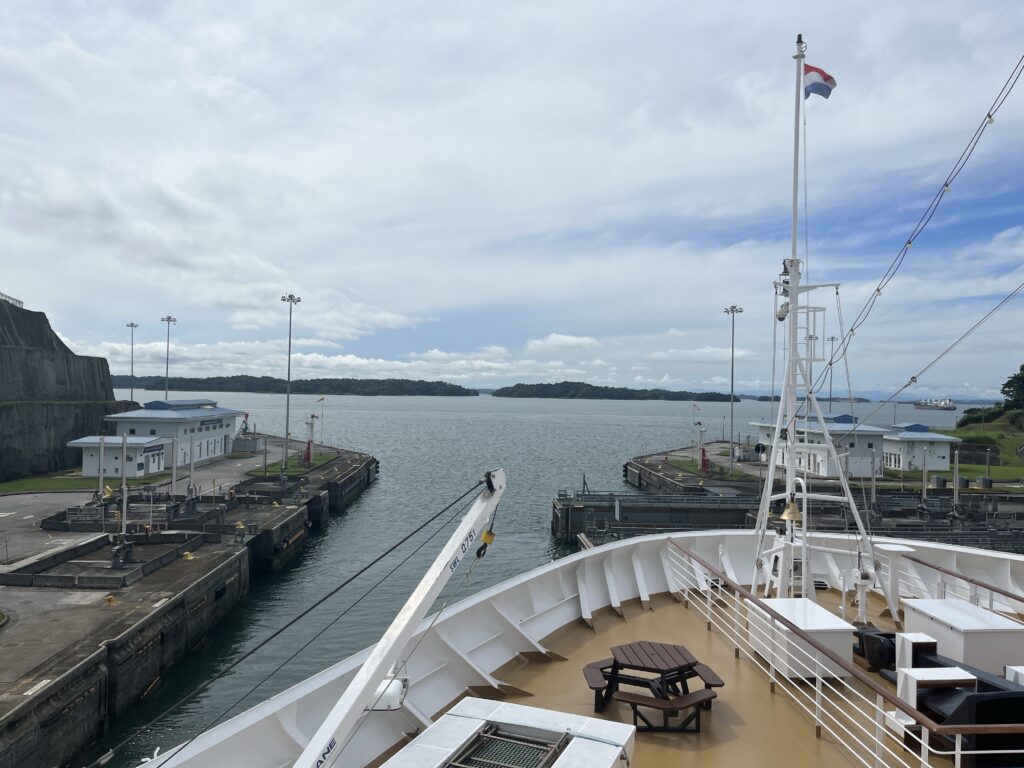
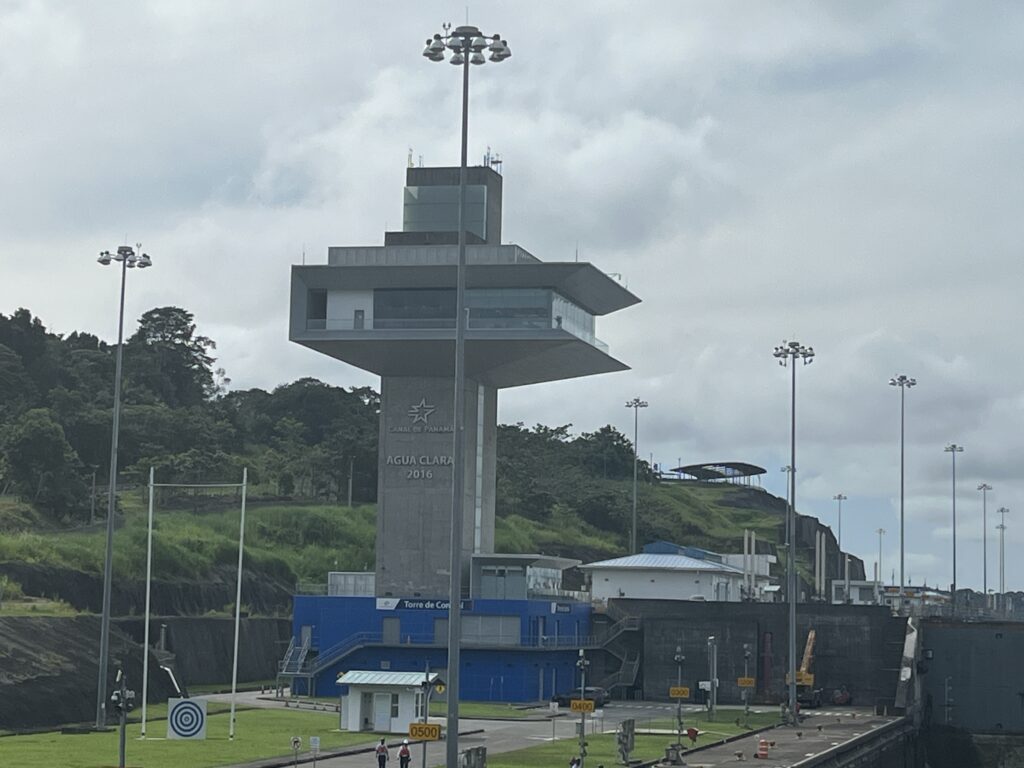
As soon as we got into Gatun Lake, the canal authority told us we could not do any scenic cruising around the lake due to traffic and asked us to leave.
How rude!
The Captain literally spun the ship around and took us right through the canal once again.
For this passage, I left the bow of the ship and headed aft to see the lock system from a different perspective.
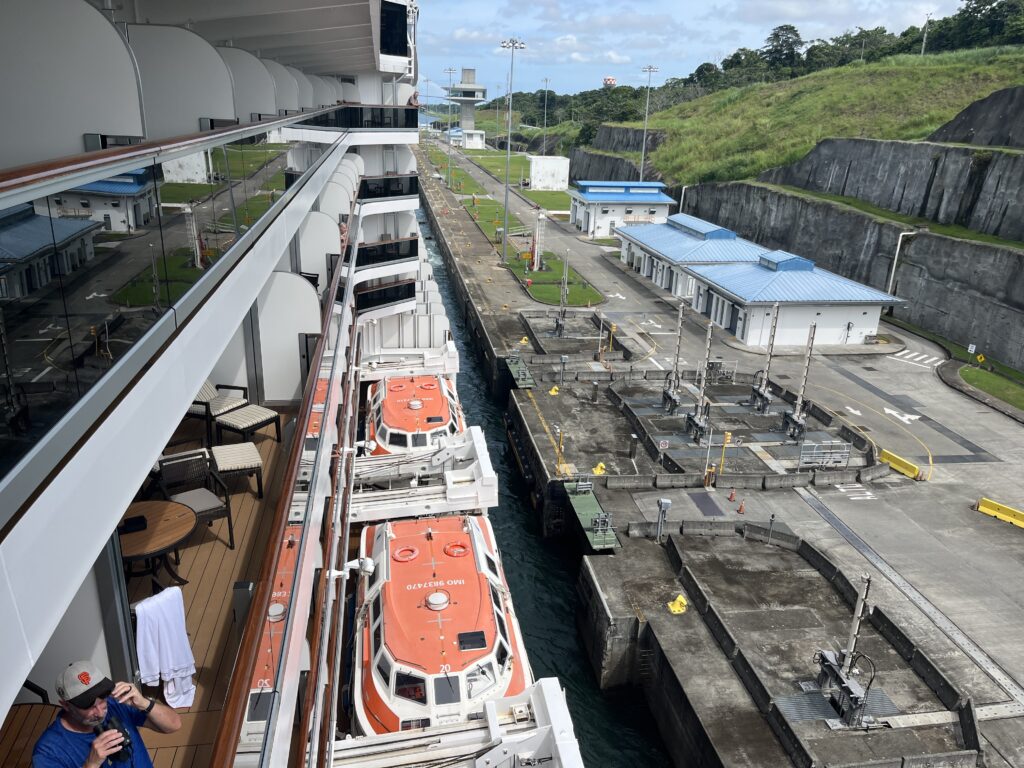
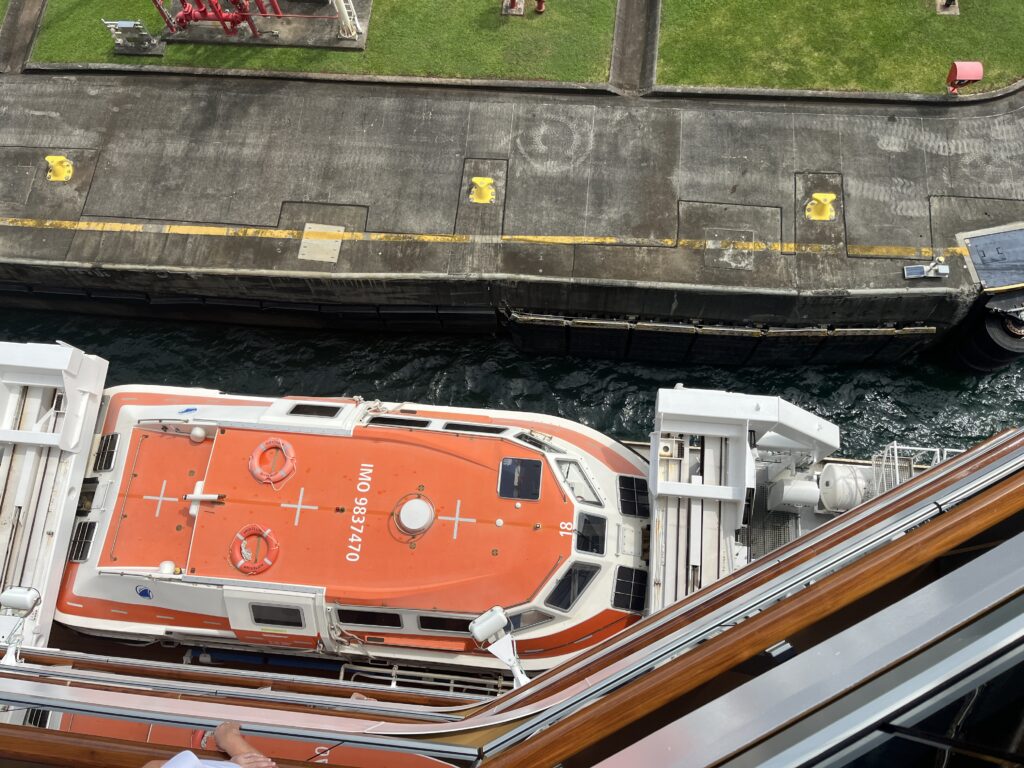
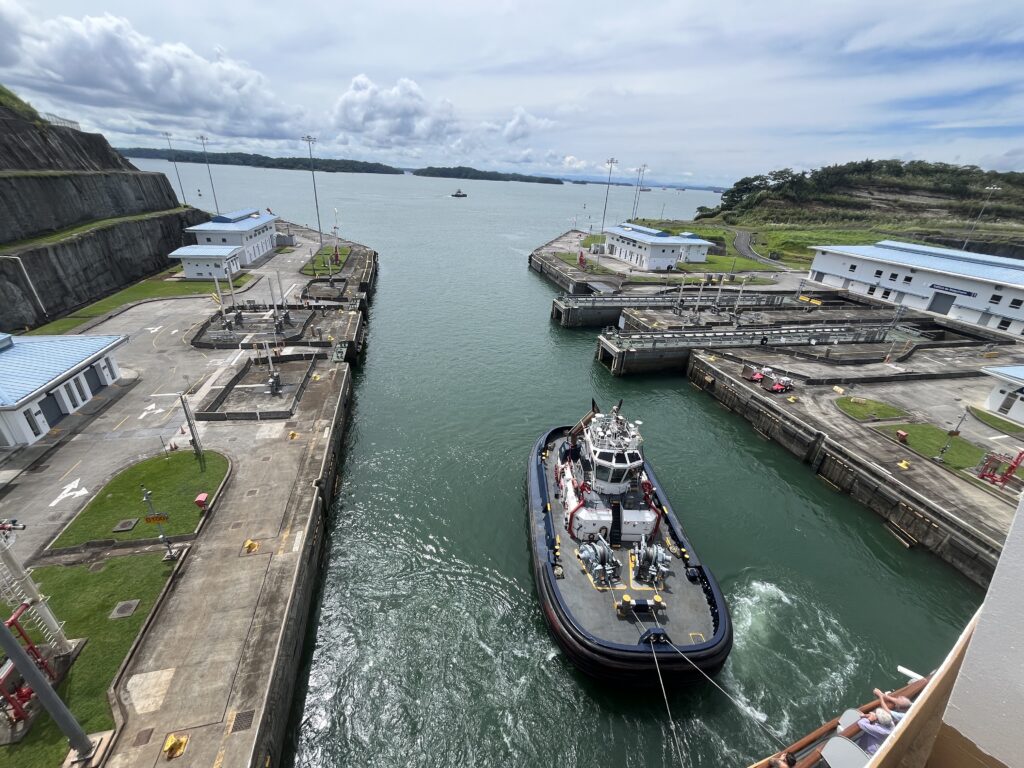
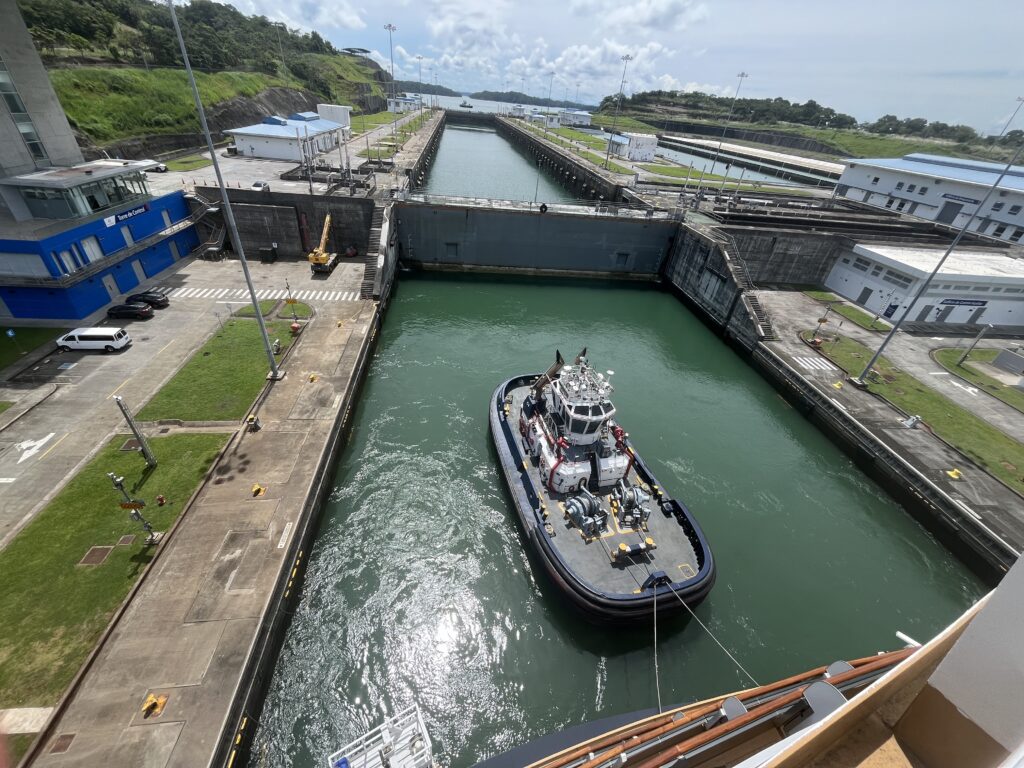
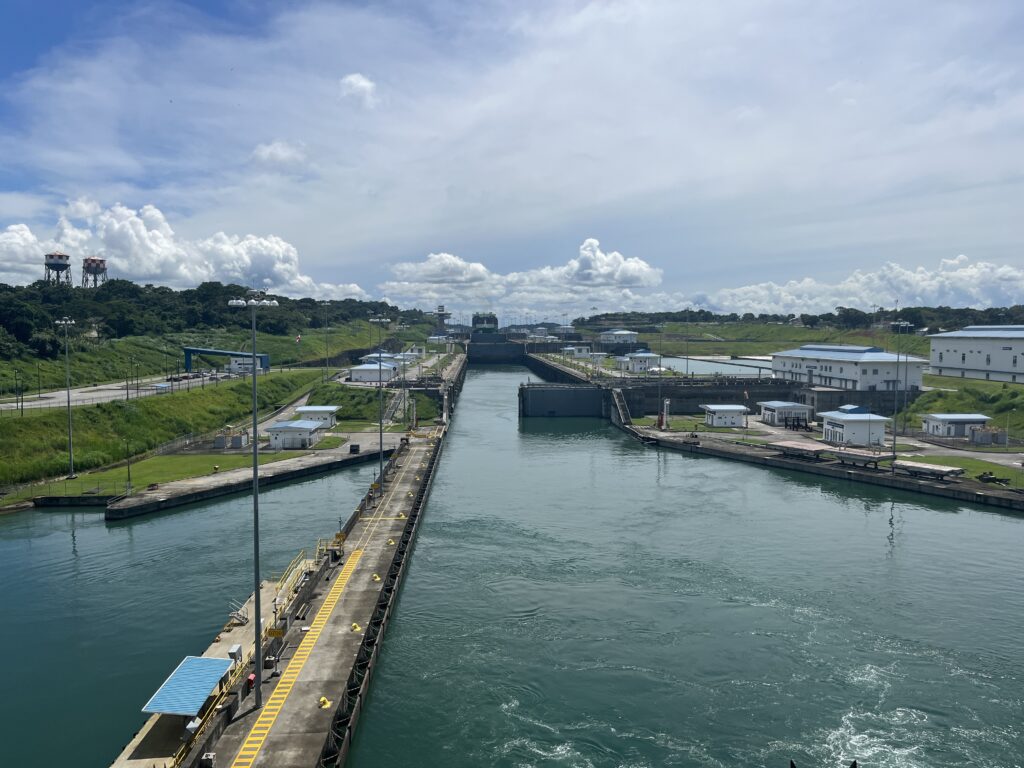
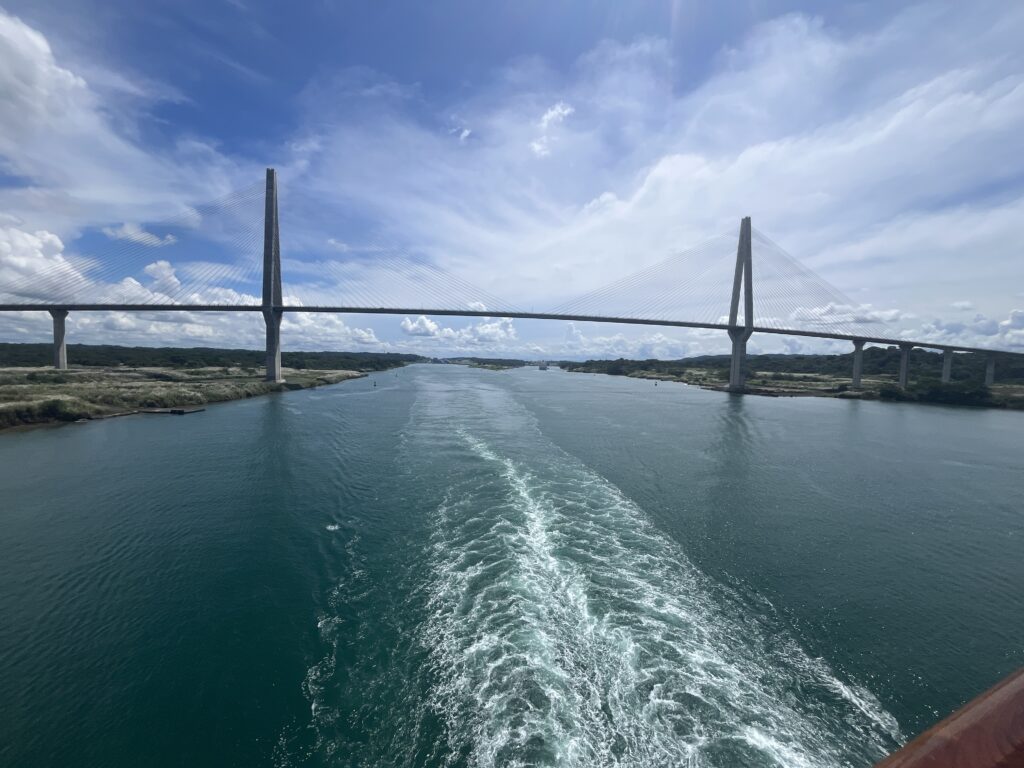
A few notes about Panama. It’s hot, the sun is brutal, and the mosquitoes are the size of small children. Viewing time for this whole process was about 7 hours and I was standing in the sun the whole time. I’m just a tad bit sunburnt from it all and still disappointed that I wasn’t able to cross over to the Pacific and we weren’t able to do some cruising around the lake as there is a lot of wildlife, islands, and sightseeing to do.
Panama gave us the bum rush!
After a hot, long, exhausting day, the evening’s main show was the second show from country singer/guitarist Ric Steele. His first show earlier on during the cruise was standing room only, tonight’s show had seats available, presumably everyone else was exhausted from the sun as well.
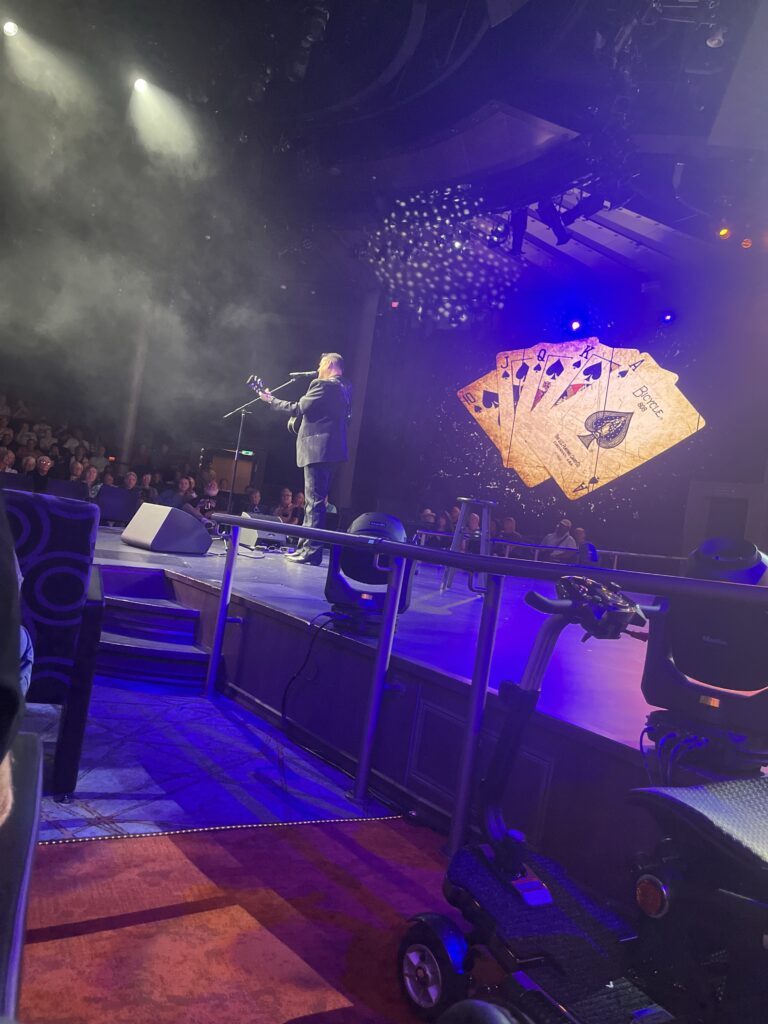
For dinner, I was in the mood for a slow, relaxed meal rather than the quick service of the ship’s dining room, so I went back to the steakhouse, Pinnacle Grille, where I enjoyed another great dinner paired with equally great wine.
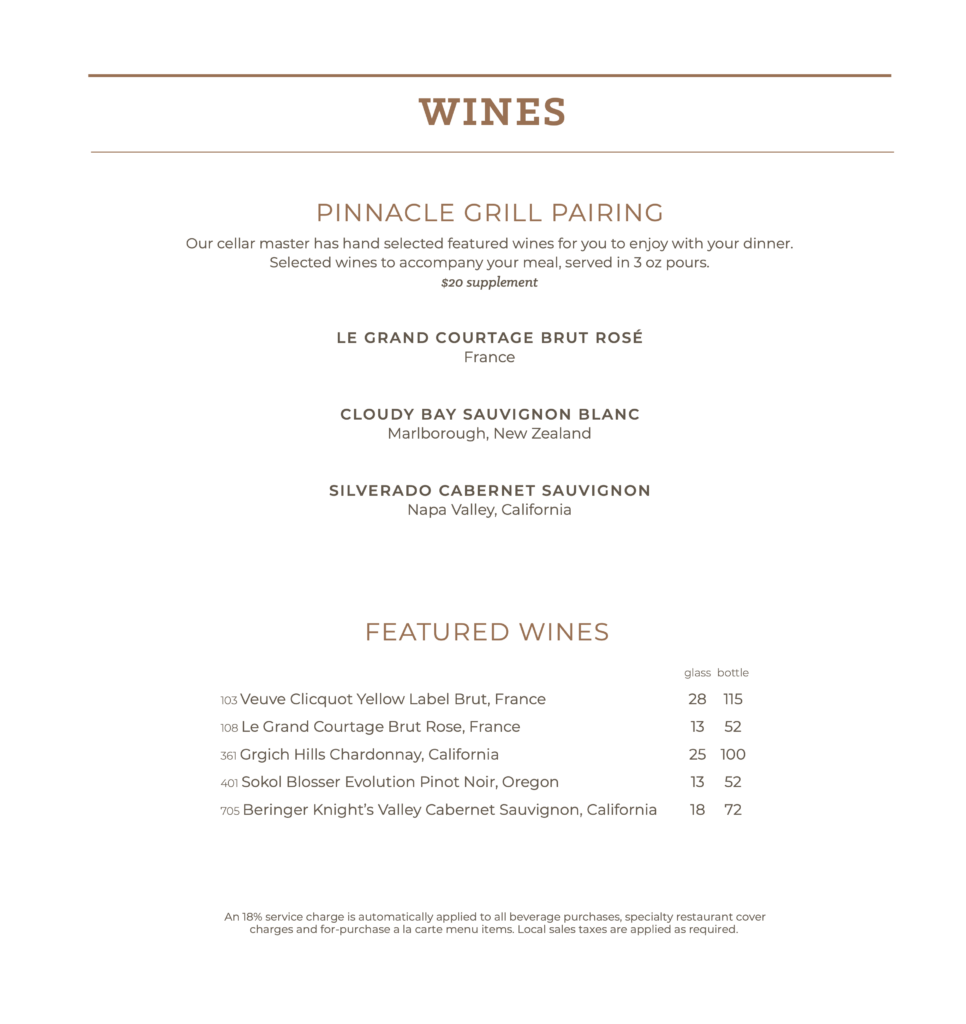
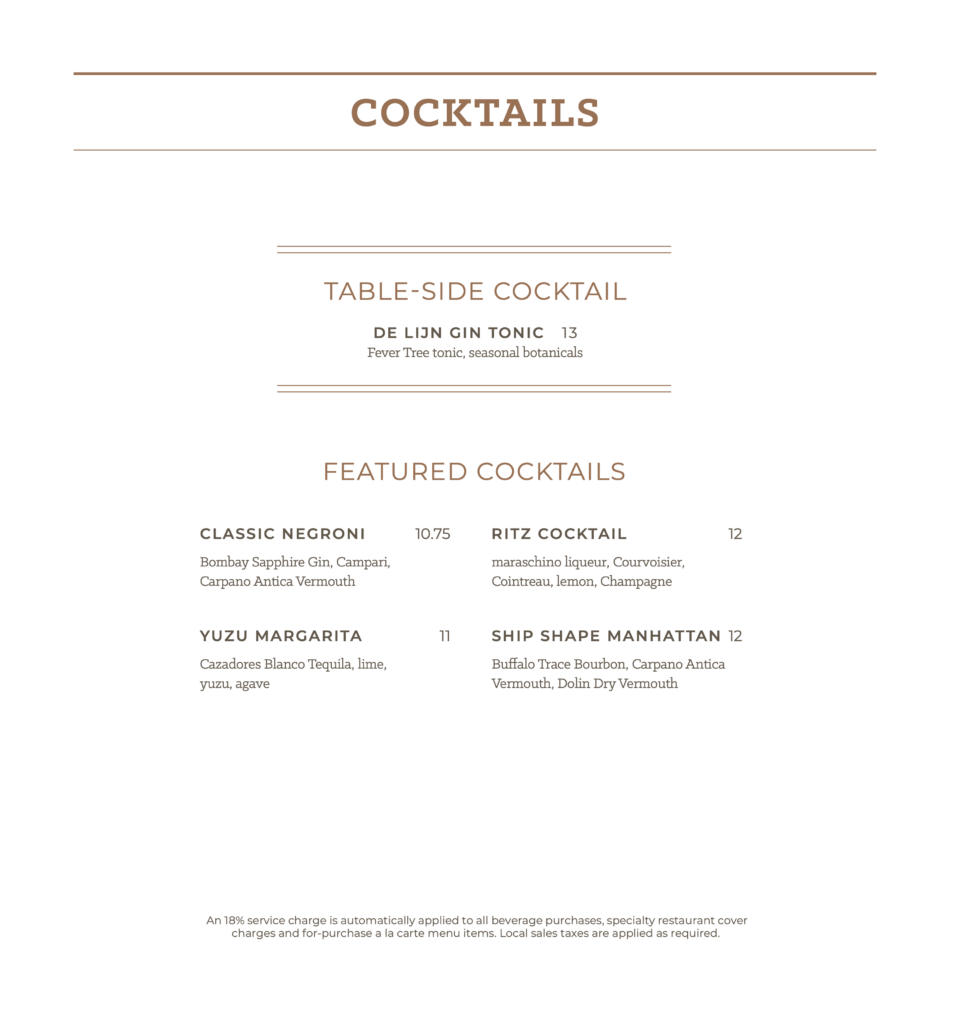
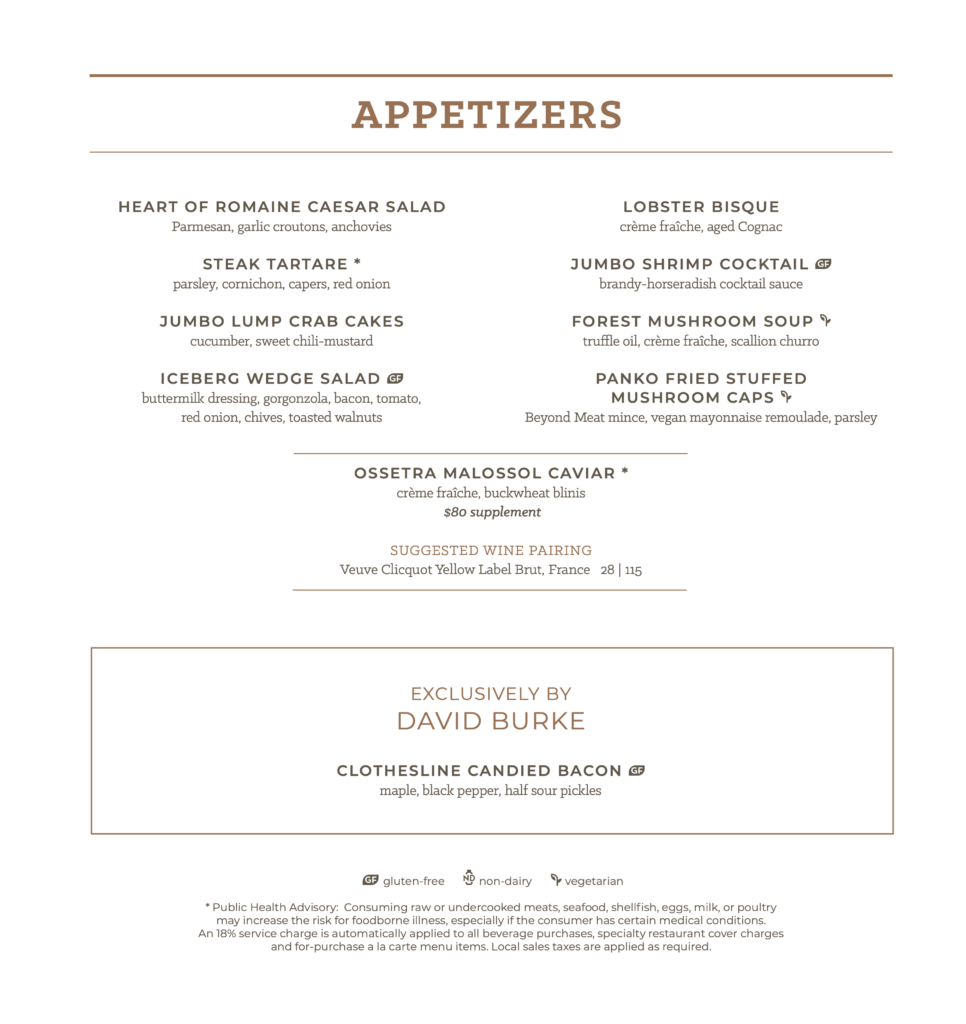
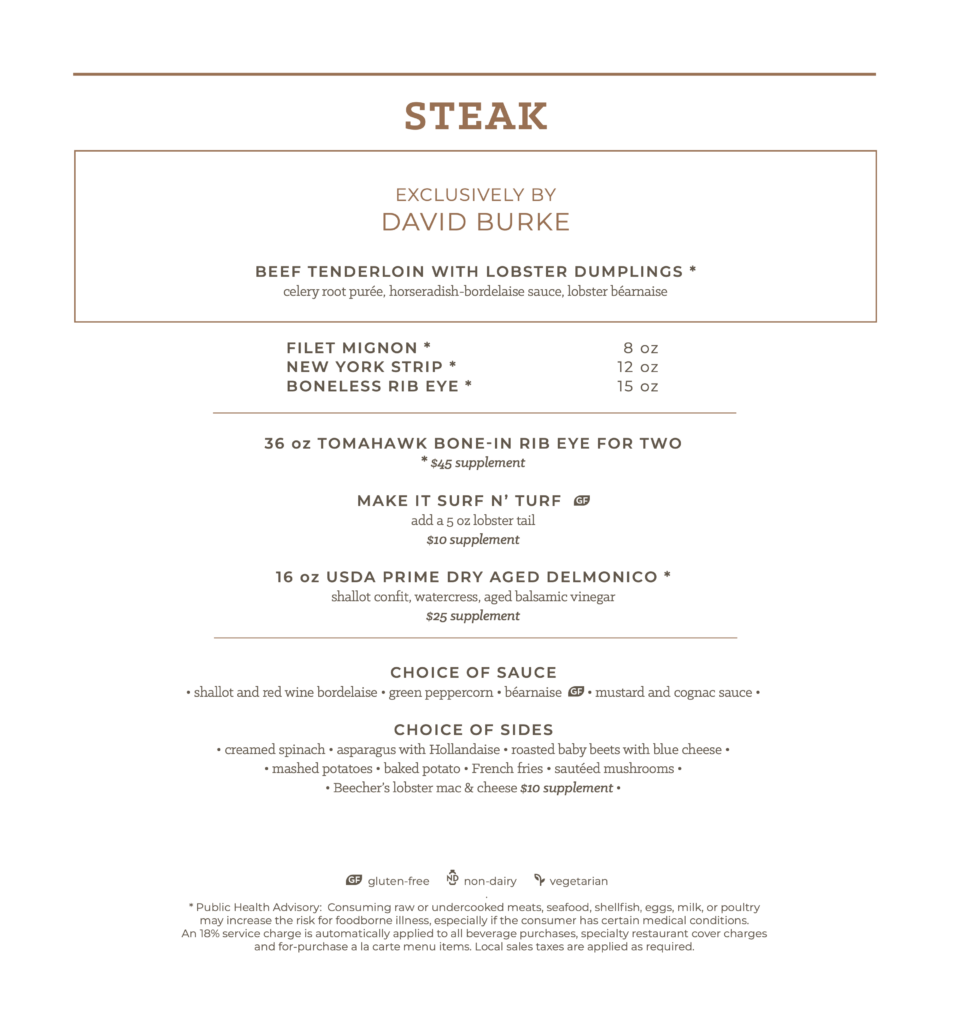
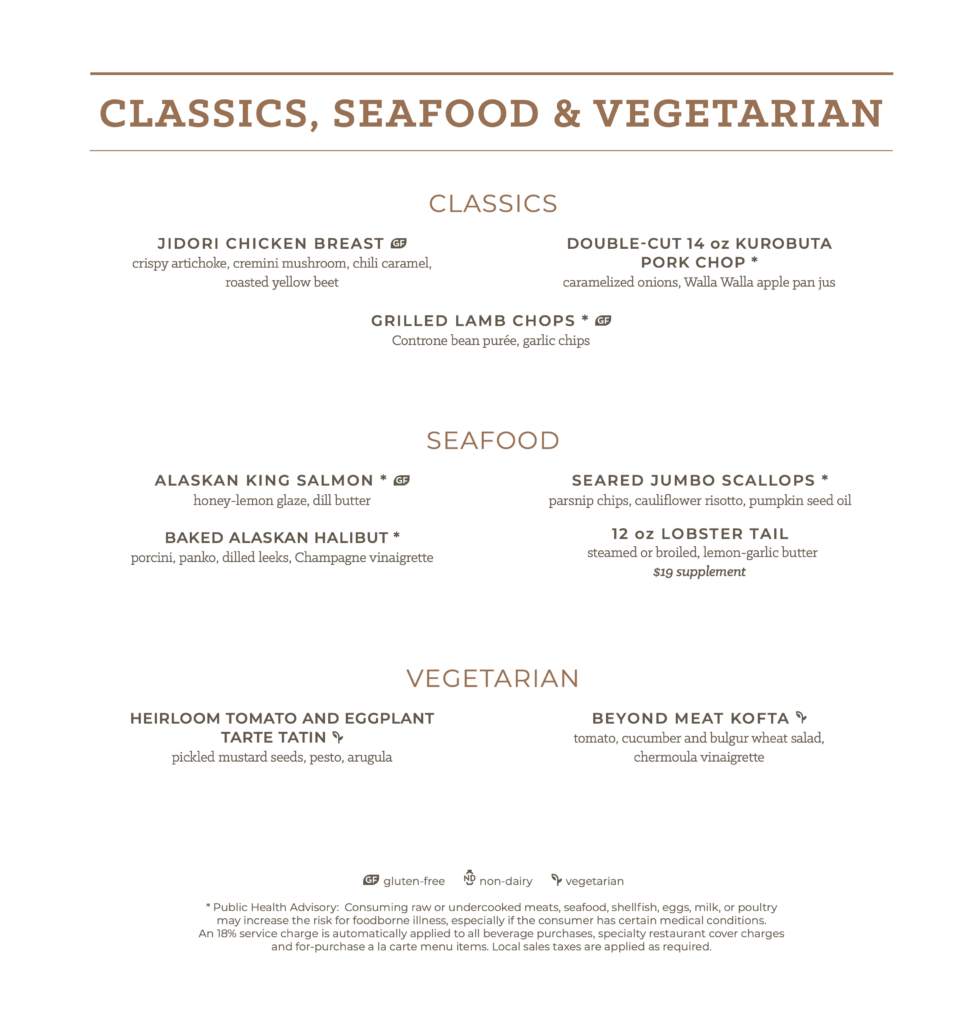
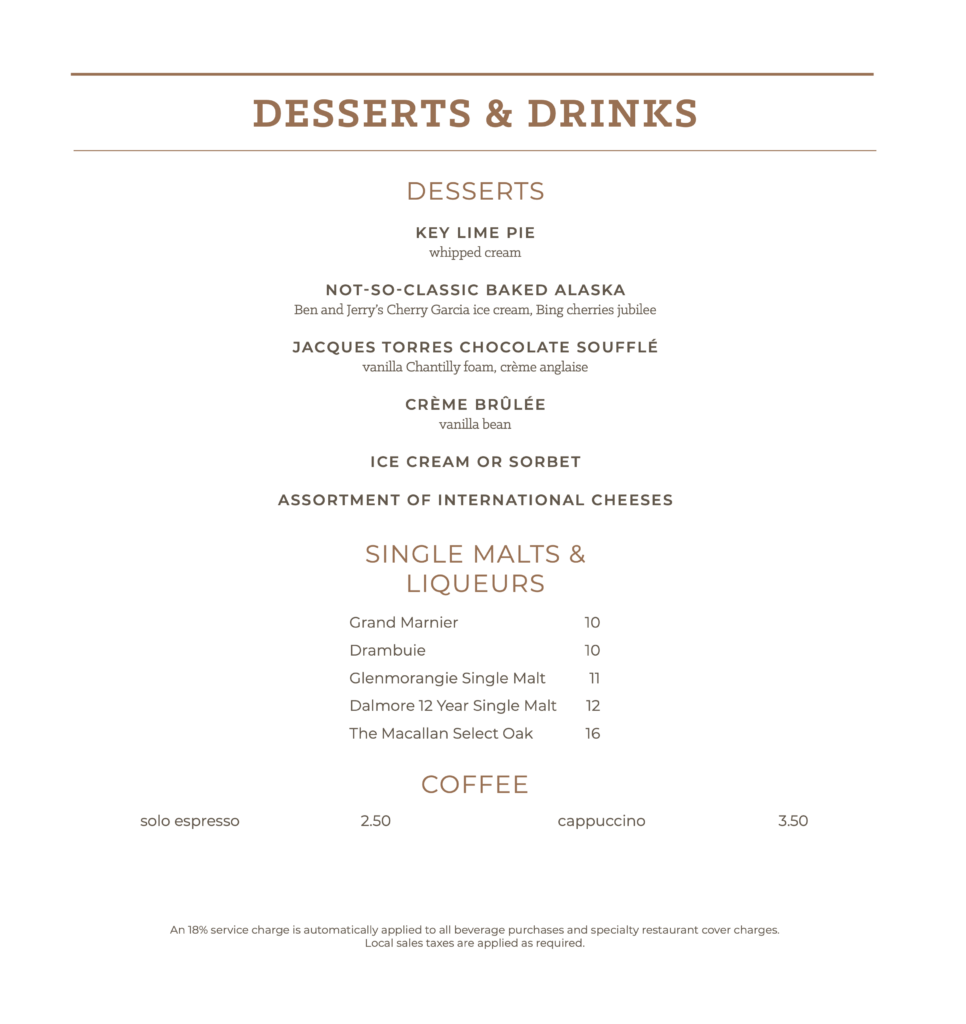
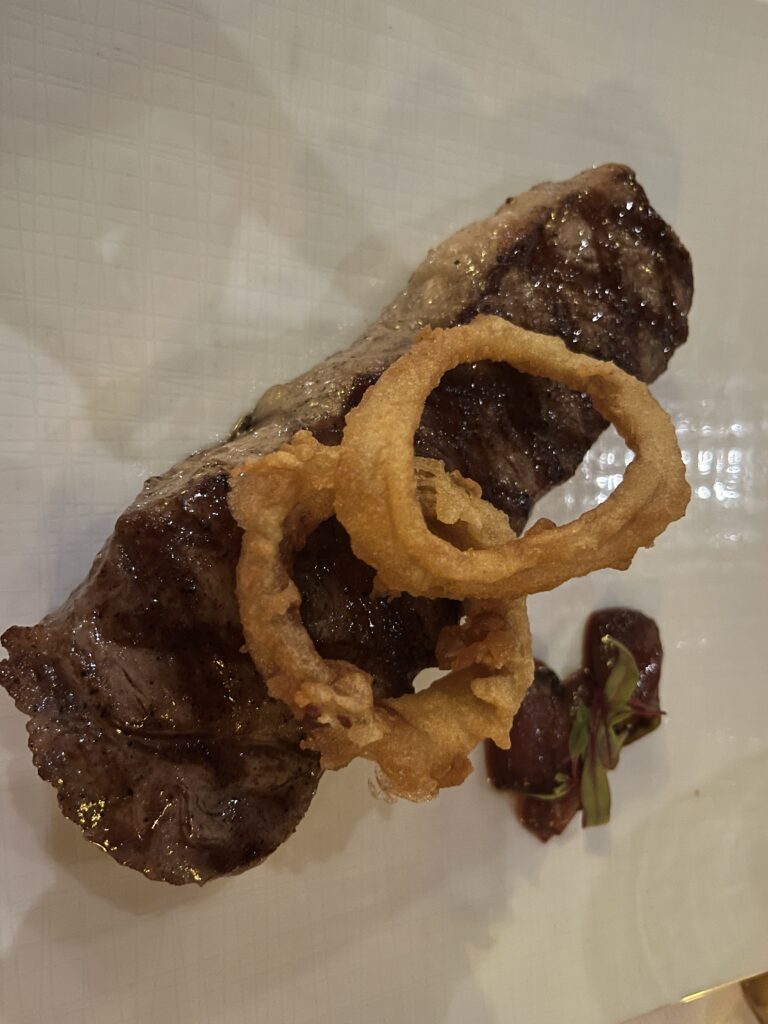
Our next port of call is Port Limon in Costa Rica… see you then, and thanks for following along.
Links to Rotterdam Restaurant Menus
Restaurant menus for October 29, 2023, on Holland America Rotterdam:
- Lido Market – Breakfast Menu
- Lido Market – Lunch Menu
- Lido Market – Dinner Menu
- Main Dining Room – Breakfast Menu
- Main Dining Room – Lunch Menu
- Main Dining Room – Dinner Menu
- Club Orange – Breakfast Menu
- Club Orange – Dinner Menu
- Pinnacle Grill – Lunch Menu
- Pinnacle Grill – Dinner Menu
- Canaletto – Dinner Menu
- Nami Sushi – Dinner Menu
- Tamarind – Dinner Menu
- Tamarind Bar – Lite Bites Menu
- Rudi’s Sel de Mer – Dinner Menu
- Rotterdam Room Service Menu – All Day Menu
- New York Deli & Pizza – All Day Menu
- Dive In Burgers & Hot Dogs – All Day Menu
Daily Planner for Day 8:
